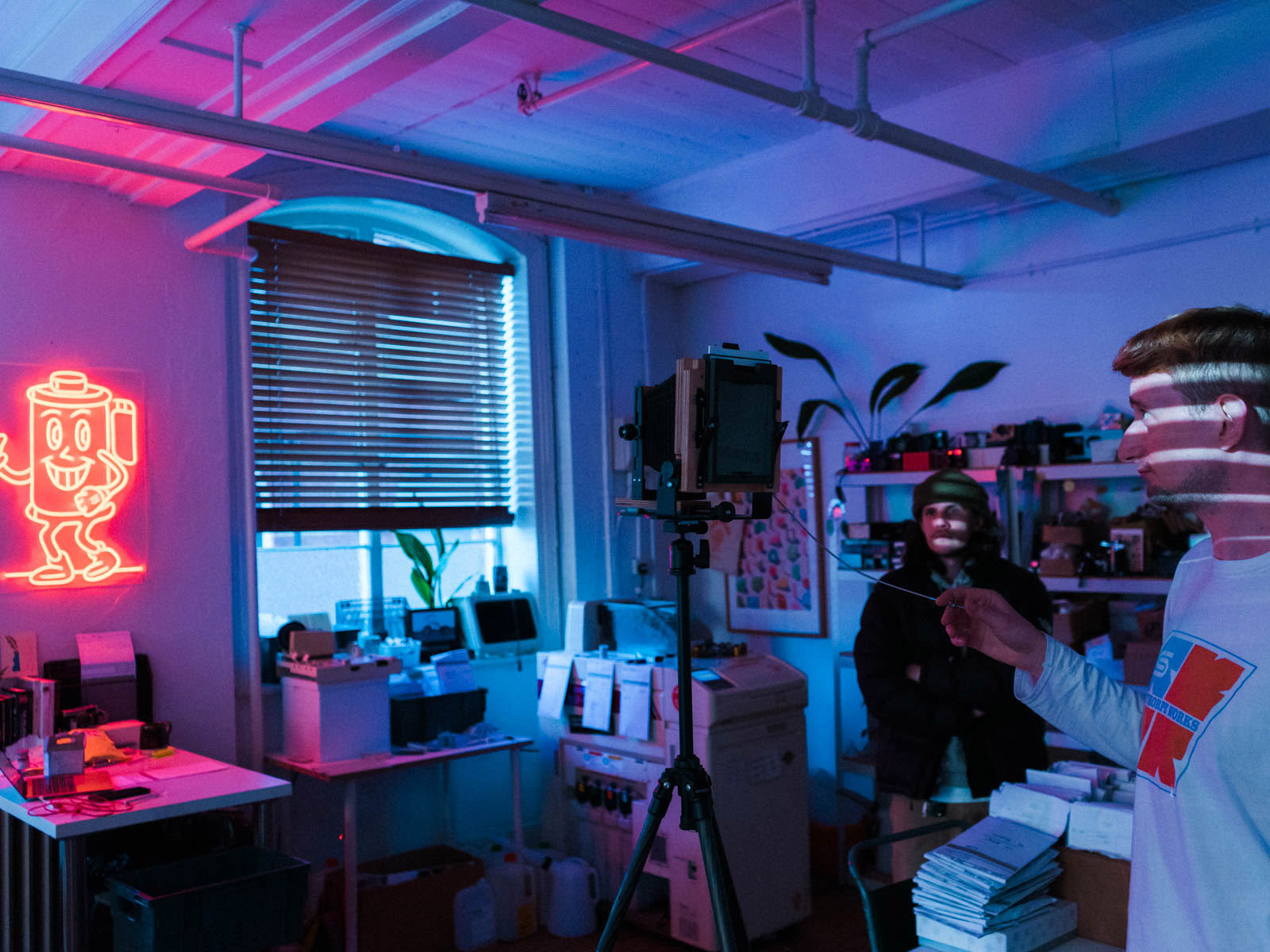

Developing 20 year expired 4x5” Film with waste chemicals.
For anyone who has shot 4x5” before you know just how expensive it can be – for anyone who hasn’t the current price of 10 sheets of Portra 400 is £55. So that works out at £5.50 per shot, and that’s before the processing costs. Ouch.
This is why I spend most of my time scouring eBay for expired boxes of sheet film, which is usually way, way cheaper than anything you can buy brand new (Yeah, I’m a cheapskate, so what!). Even though I’ve been shooting 4x5” film for years, for some reason I’ve only ever shot either E6 slide film or B&W, never any C41. So, when I came across a box of 50 sheets of Fuji NPS 160 for a good price I figured I’d give it a go – even if it did expire in 2001.

Sticking with my cheapskate mentality I thought I’d try to do the whole thing as cheap as possible, why mix some fresh chemicals when our Noritsu V30 spits out C41 waste chemicals that should still be good enough to develop the film with a bit of tweaking in processing time.
The whole kit I used is as follows:
- Intrepid 4x5 with lens, film holders etc.
- Nikor 4x5 processing tank
- Stick style sous vide cooker (I’ll explain this one in a bit)
- Waste C41 RA chemicals (Colour Developer, Bleach, Fix)
- Fresh chemicals (Stabiliser)

For anyone new to, or unfamiliar with colour negative film developing, the way a minilab processor works is by draining off a small amount of chemicals for each film processed and then automatically topping itself up with the same amount of fresh chemicals. These waste chemicals are then dumped and disposed of by a waste processing company. However, these waste chemicals aren’t useless, they are still ‘active’ enough to be able to process a film, it just means you’ll have to process the film for a little longer than usual.
All of the photographs we took were shot at an ISO of 50 to compensate for the age of the film, it’s meant to be shot at 160, but the standard rule is to overexpose by one stop per decade out of date your film is.

Once all of the kit was gathered together everything was placed into a water bath. Remember the sous vide machine I mentioned before? We weren’t cooking steaks with it (yet, anyway), it just happens to be perfect for keeping the temperature of the water bath exactly right.

I used the standard times for Kodak Flexicolor C41 RA chemistry and then added 30 seconds to each time to account for the chemicals being old – this was a bit of guess work, but it seemed to work okay! After they were taken out of the developing tank, I gave them a quick rinse and hung them up to dry – happy to see that they weren’t all blank!

After, they were scanned and converted into positives using the awesome Negative Lab Pro in Lightroom. The colours are kind of funky and the film is a lot grainier than you’d expect from 4x5” but hey – not bad for 20 years expired and using chemicals that usually get thrown out!



Share:
2 comments
-
Great stuff! I might have some 1990’s Ektachrome 5×4 somewhere – I might try using it in my MPP Micropress, to see if you can make anything of it (could you process Ektachrome?).
Ian Button on
-
Love this! Really interesting experiment and the results turned out great!
Rob Ulitski on

















